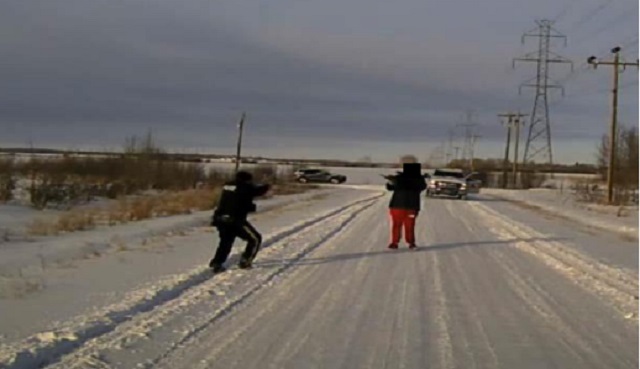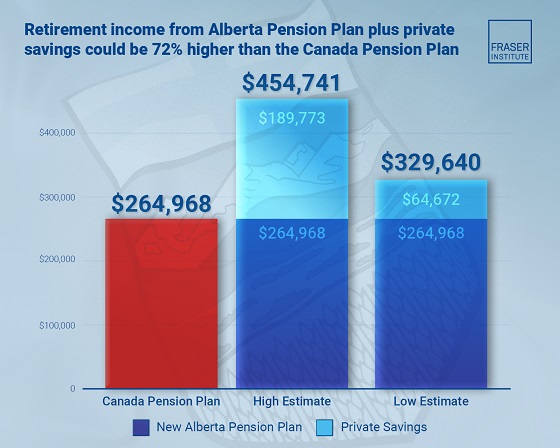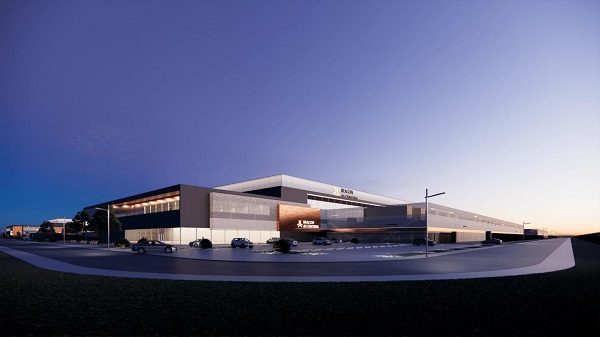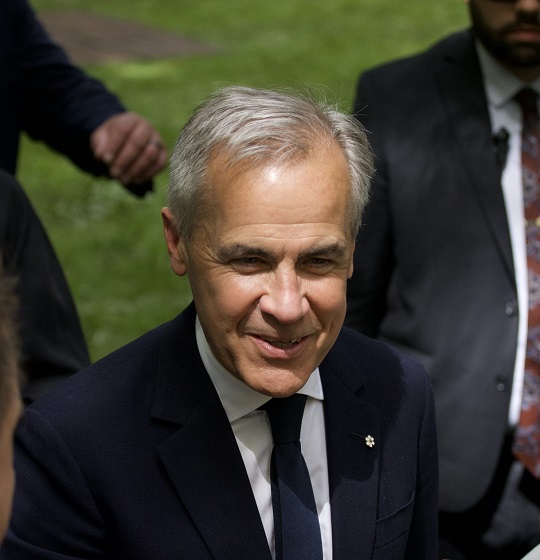Alberta
ASIRT investigations concluded on fatal officer-involved shooting involving the RCMP.

Incident investigation report from the Alberta Serious Incident Response Team (ASIRT)
Introduction
On December 22, 2022, the Alberta Serious Incident Response Team (ASIRT) was directed pursuant to s. 46.1 of the Police Act to investigate a then non-fatal Royal Canadian Mounted Police (RCMP) officer-involved shooting. The shooting of the affected person (AP) was reported to have happened during an interaction with him, as a result of him being a suspect in a complaint of a man with a gun.
While AP initially survived, he died of complications from the shooting the following day.
ASIRT’s Investigation
ASIRT’s investigation was comprehensive and thorough, conducted using current investigative protocols and principles relating to Major Case Management. Information from civilian witnesses, the subject and a witness officers, and importantly video recordings provided sufficient information to determine whether the force used by the subject officer during this incident was reasonable.
Circumstances Surrounding the Officer-Involved Shooting
On December 01, 2022, Maskwacis RCMP received a call reporting that a male [AP] had been drinking and left the caller’s house with a gun. AP was shooting the gun in the country (believed to be the area around the residence). Two RCMP officers responded.
Witness officer (WO) located AP walking on the road with a rifle. AP walked toward WO’s marked police vehicle with the rifle pointed at the vehicle/WO, while WO was seated in the driver’s seat. WO then exited his vehicle with his carbine rifle and moved to the rear of his vehicle while AP kept the rifle pointed at the police vehicle. The subject officer (SO) arrived on scene, but came from the opposite direction. AP turned around and walked toward SO with the barrel of the rifle pointed upwards. SO exited his police vehicle with his service pistol drawn and walked toward AP while he
repeatedly provided verbal direction to AP to drop the firearm. AP and SO were walking toward each other; at that time AP still had the barrel of the rifle pointed upward. As SO and AP got within approximately five meters of each other, AP lowered the barrel of the rifle and pointed it directly at SO. SO fired multiple rounds and struck AP with four rounds causing AP to stumble, drop the rifle and fall to the ground. AP initially survived the shooting and was transported to an Edmonton hospital, where he underwent emergency surgery. The following day, AP succumbed to his injuries.
Analysis
The subject officer was lawfully placed and acting in the execution of his duties in dealing with AP as a person who was the subject of a complaint about him being in possession of a firearm and shooting it off.
The Use of Force
Under s. 25 of the Criminal Code, police officers are permitted to use as much force as is necessary for the execution of their duties. Where this force is intended or is likely to cause death or grievous bodily harm, the officer must believe on reasonable grounds that the force is necessary for the self-preservation of the officer or preservation of anyone under that officer’s protection.
A police officer’s use of force is not to be assessed on a standard of perfection nor using the benefit of hindsight.
With the benefit of hindsight, time for detached reflection and knowledge of the ultimate outcome, it is easy to speculate about how things could have been done differently. That is not the standard, however, against which an officer’s conduct is measured. The question is, applying principles of proportionality, necessity, and reasonableness, whether the force used falls into a range of possible reasonable responses.
Proportionate Response
Proportionality requires balancing a use of force with the action to which it responds. Here, the subject officers were faced with an individual that was armed with a gun and pointing it in their direction. As such, the response by the subject officers in using their respective firearms to shoot AP was proportionate to the threat of death or grievous bodily harm that he reasonably posed to both of them.
Reasonably Necessary
As set out previously in this report, AP presented as a lethal threat to both SO and WO given his actions in pointing his rifle at them. While WO did not shoot during this incident that does not impact the analysis of SO’s actions. Under the circumstances as then faced by SO, no other use of force options were reasonably available for attempted use. The use by SO of his firearm to incapacitate this lethal threat was reasonably necessary. Given the above, the defence available to SO under s. 25 of the Criminal Code would apply.
Conclusion
Under s. 25 of the Criminal Code a police officer is justified in doing what he or she is authorized to do and to use as much force as is reasonably necessary where he or she has reasonable grounds to do so. Force intended to cause death or grievous bodily harm is justified if the officer believes, on reasonable grounds, that the force was necessary to prevent the death or grievous bodily harm of the officer and/or any other person. The analysis under s.34 of the Criminal Code leads to a similar finding that subject officer’s actions were lawfully permitted.
After a thorough, independent and objective investigation into the conduct of the subject officers, it is my opinion that they were lawfully placed and acting properly in the execution of their duties. There is no evidence to support any belief that any officer engaged in any unlawful or unreasonable conduct that would give rise to an offence. The force used was proportionate, necessary and reasonable in all the circumstances.
Alberta
Median workers in Alberta could receive 72% more under Alberta Pension Plan compared to Canada Pension Plan

From the Fraser Institute
By Tegan Hill and Joel Emes
Moving from the CPP to a provincial pension plan would generate savings for Albertans in the form of lower contribution rates (which could be used to increase private retirement savings while receiving the same pension benefits as the CPP under the new provincial pension), finds a new study published today by the Fraser Institute, an independent, non-partisan Canadian public policy think-tank.
“Due to Alberta’s comparatively high rates of employment, higher average incomes, and younger population, Albertans would pay a lower contribution rate through a separate provincial pension plan while receiving the same benefits as under the CPP,” said Tegan Hill, director of Alberta policy at the Fraser Institute and co-author of Illustrating the Potential of an Alberta Pension Plan.
Assuming Albertans invested the savings from moving to a provincial pension plan into a private retirement account, and assuming a contribution rate of 5.85 per cent, workers earning the median income in Alberta ($53,061 in 2025) could accrue a stream of retirement payments totalling $454,741 (pre-tax)—a 71.6 per cent increase from their stream of CPP payments ($264,968).
Put differently, under the CPP, a median worker receives a total of $264,968 in retirement income over their life. If an Alberta worker saved the difference between what they pay now into the CPP and what they would pay into a new provincial plan, the income they would receive in retirement increases. If the contribution rate for the new provincial plan was 5.85 per cent—the lower of the available estimates—the increase in retirement income would total $189,773 (or an increase of 71.6 per cent).
If the contribution rate for a new Alberta pension plan was 8.21 per cent—the higher of the available estimates—a median Alberta worker would still receive an additional $64,672 in retirement income over their life, a marked increase of 24.4 per cent compared to the CPP alone.
Put differently, assuming a contribution rate of 8.21 per cent, Albertan workers earning the median income could accrue a stream of retirement payments totaling $329,640 (pre-tax) under a provincial pension plan—a 24.4 per cent increase from their stream of CPP payments.
“While the full costs and benefits of a provincial pension plan must be considered, its clear that Albertans could benefit from higher retirement payments under a provincial pension plan, compared to the CPP,” Hill said.
Illustrating the Potential of an Alberta Pension Plan
- Due to Alberta’s comparatively high rates of employment, higher average incomes, and younger population, Albertans would pay a lower contribution rate with a separate provincial pension plan, compared with the CPP, while receiving the same benefits as under the CPP.
- Put differently, moving from the CPP to a provincial pension plan would generate savings for Albertans, which could be used to increase private retirement income. This essay assesses the potential savings for Albertans of moving to a provincial pension plan. It also estimates an Albertan’s potential increase in total retirement income, if those savings were invested in a private account.
- Depending on the contribution rate used for an Alberta pension plan (APP), ranging from 5.85 to 8.2 percent, an individual earning the CPP’s yearly maximum pensionable earnings ($71,300 in 2025), would accrue a stream of retirement payments under the total APP (APP plus private retirement savings), yielding a total retirement income of between $429,524 and $584,235. This would be 22.9 to 67.1 percent higher, respectively, than their stream of CPP payments ($349,545).
- An individual earning the median income in Alberta ($53,061 in 2025), would accrue a stream of retirement payments under the total APP (APP plus private retirement savings), yielding a total retirement income of between $329,640 and $454,741, which is between 24.4 percent to 71.6 percent higher, respectively, than their stream of CPP payments ($264,968).

Joel Emes
Alberta
Alberta ban on men in women’s sports doesn’t apply to athletes from other provinces

From LifeSiteNews
Alberta’s Fairness and Safety in Sport Act bans transgender males from women’s sports within the province but cannot regulate out-of-province transgender athletes.
Alberta’s ban on gender-confused males competing in women’s sports will not apply to out-of-province athletes.
In an interview posted July 12 by the Canadian Press, Alberta Tourism and Sport Minister Andrew Boitchenko revealed that Alberta does not have the jurisdiction to regulate out-of-province, gender-confused males from competing against female athletes.
“We don’t have authority to regulate athletes from different jurisdictions,” he said in an interview.
Ministry spokeswoman Vanessa Gomez further explained that while Alberta passed legislation to protect women within their province, outside sporting organizations are bound by federal or international guidelines.
As a result, Albertan female athletes will be spared from competing against men during provincial competition but must face male competitors during inter-provincial events.
In December, Alberta passed the Fairness and Safety in Sport Act to prevent biological men who claim to be women from competing in women’s sports. The legislation will take effect on September 1 and will apply to all school boards, universities, as well as provincial sports organizations.
The move comes after studies have repeatedly revealed what almost everyone already knew was true, namely, that males have a considerable advantage over women in athletics.
Indeed, a recent study published in Sports Medicine found that a year of “transgender” hormone drugs results in “very modest changes” in the inherent strength advantages of men.
Additionally, male athletes competing in women’s sports are known to be violent, especially toward female athletes who oppose their dominance in women’s sports.
Last August, Albertan male powerlifter “Anne” Andres was suspended for six months after a slew of death threats and harassments against his female competitors.
In February, Andres ranted about why men should be able to compete in women’s competitions, calling for “the Ontario lifter” who opposes this, apparently referring to powerlifter April Hutchinson, to “die painfully.”
Interestingly, while Andres was suspended for six months for issuing death threats, Hutchinson was suspended for two years after publicly condemning him for stealing victories from women and then mocking his female competitors on social media. Her suspension was later reduced to a year.
-

 Opinion1 day ago
Opinion1 day agoPreston Manning: Three Wise Men from the East, Again
-

 Addictions1 day ago
Addictions1 day agoWhy B.C.’s new witnessed dosing guidelines are built to fail
-

 Business1 day ago
Business1 day agoMark Carney’s Fiscal Fantasy Will Bankrupt Canada
-

 Uncategorized2 days ago
Uncategorized2 days agoCNN’s Shock Climate Polling Data Reinforces Trump’s Energy Agenda
-

 COVID-1924 hours ago
COVID-1924 hours agoTrump DOJ dismisses charges against doctor who issued fake COVID passports
-

 Alberta24 hours ago
Alberta24 hours agoTemporary Alberta grid limit unlikely to dampen data centre investment, analyst says
-

 Entertainment2 days ago
Entertainment2 days agoStudy finds 99% of late-night TV guests in 2025 have been liberal
-

 Energy20 hours ago
Energy20 hours agoActivists using the courts in attempt to hijack energy policy







